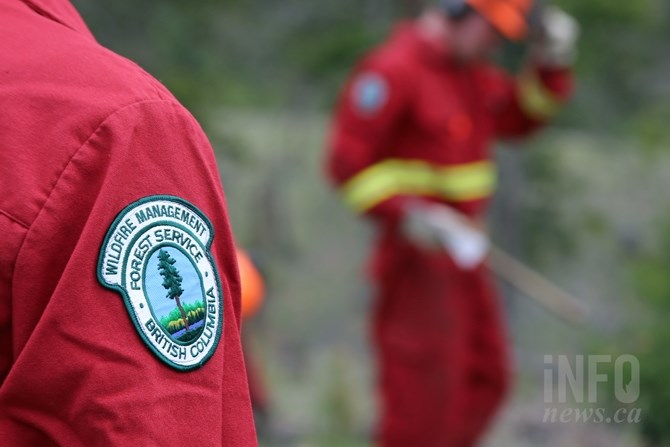
(JENNIFER STAHN / iNFOnews.ca)
August 03, 2021 - 6:00 PM
The largest wildfires in B.C. are expected to burn until the snow falls in 2021.
While a weekend of rain helped slow wildfires from spreading, the precipitation was not nearly enough to make up for the hot and dry fire season of 2021.
"This weekend we were able to get guards in places where it was too dangerous... on some of the larger fires," Director of fire operations for the B.C. Wildfire Service, Rob Schweitzer said at the Aug. 3 provincial fire update.
Rain and humidity cooled fire activity at larger wildfires, allowing crews to drop into steeper, more dangerous terrain and build more fire guards, Schweitzer said.
"There will be some of the fires that are burning in more remote areas, in difficult terrain and where there's less values at risk that will burn until fall and even when snow falls. Our focus remains on those front country fires — the ones that are potentially impacting communities and infrastructure," Schweitzer said.
However, there has been fewer new fire starts each week than at the beginning of the season. With fewer than seven new fires per day, Schweitzer says the majority of current wildfires burning in B.C. have been caused by lightning.
Of the 249 current wildfires in the province, 17 are human-caused.
With a total of 1,312 wildfires in B.C. this year, 566,000 hectares of land have been burned so far. That's well above the ten year average of 760 wildfires and 114,000 hectares by this time of the year, according to Schweitzer.
Over 4,500 properties are currently ordered to be evacuated, with more than 21,000 properties on evacuation alert, according to Brendan Ralfs of Emergency Management B.C.
With fewer new fires starting daily in B.C., Schweitzer insisted that Aug. 3 is still early in the wildfire season, but crews should be able to continue working on the 34 wildfires of note across the province if new fire starts remain low.
Schweitzer could not, of course, predict exactly when some of the largest wildfires would be brought under control, but the hot and dry conditions that are persistent throughout the southern Interior have been challenging for the wildfire service.
The first priority, Schweitzer said, is to protect communities and infrastructure that are directly at-risk, then move inward to douse wildfires once perimeters are established.
Go here for more stories about wildfires in B.C.
To contact a reporter for this story, email Levi Landry or call 250-819-3723 or email the editor. You can also submit photos, videos or news tips to the newsroom and be entered to win a monthly prize draw.
We welcome your comments and opinions on our stories but play nice. We won't censor or delete comments unless they contain off-topic statements or links, unnecessary vulgarity, false facts, spam or obviously fake profiles. If you have any concerns about what you see in comments, email the editor in the link above.
News from © iNFOnews, 2021